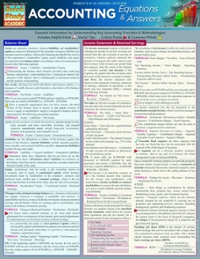In Year 1. Victoria Textiles Limited decided that its Asian operations had expanded such that an Asian office should be established. The office would be involved in selling Victoria's current product lines: it was also expected to establish supplier contacts. In the Asian market, there were a number of small manufacturers of top-quality fabrics. particularly silk and lace, but from Victoria's home office in Ontario it was difficult to nd and maintain these suppliers. To assist in doing so, a wholly owned company. Victoria Textiles [India] Limited, was created, and a facility was established in India in January. Year 2. The new company. VTIL, was given the mandate from head office to buy and sell with other Victoria divisions and ofces across Canada as if it were an autonomous, independent unit. To establish the company, an investment of 10.000.000 Indian rupees [mm was made on January 1, Year 2. VTIL proved to be quite successful. as shown in the following nancial statements at December 31. Year 4. After one year of operations. VTIL had borrowed funds and expanded facilities substantially, as the initial market estimates had turned out to be quite conservative. However. during this time the rupee had fallen in value relative to the Canadian dollar. As a result. Victoria's management was somewhat confused about how to evaluate VTIL's success, given the changing currency values. me llls m same {in Thousands of, Indian Rupees} Year 4 Year 3 Cash 3,400 3,200 Accounts receivable 2,500 3,300 Inventories 4 , 500 3 , 40 0 Prepaid expenses 2,300 1,600 Plant assets [net] 7:900 3:900 zu,aon 20,400 Current monetary liabilities 500 900 Unearned revenue 900 300 Long-term debt Era 5:00\" 2,400 7,200 Cmmon shares 10,000 10,000 Retained earnings 3:200 3:200 20,600 20,400 Year 4 Year 3 Sales 20,800 13,800 Cost of sales 12:49\" 5:190 Gross profit 0,400 7,?00 Operating expenses 4,100 2,600 Interest 600 200 Taxes 600 420 Net income 3,100 4,480 Additional Information - The exchange rate at January 1. Year 2, when VTIL was originally established, was $0.05 per rupee. - Ofthe original investment of INR10 million, INR4 million was used to acquire plant and equipment. which is being depreciated on a straight-line basis over 10 years. - At June 30. Year 3, an expansion was completed at a cost of INRE- million. which was nanced entirely by a 6-year note obtained from an Indian bank. Interest is to be paid semiannually. The exchange rate at July 1, Year 3. was $0.062 per rupee. The new expansion is also to be depreciated on a straight-line basis over 10 years. [A half-year's depreciation was recorded in Year 3.} Depreciation expense of INR1,000 in Year 4 and INRTDD in Year 3 is included in operating expenses. - Inventory is accounted for on the FIFO basis. The inventory at the end of Year 3 and Year 4 was acquired when the exchange rates were $0.045 and $0.02?!' per rupee, respectively. - Sales. purchases. and operating expenses were incurred evenly throughout the year, and the average exchange rate for the year was $0.031. - The prepaid expenses and unearned revenue at December 31. Year 4, arose when the exchange rates were $0.03 and $0.028 per rupee. respectively. - Income taxes were paid in equal monthly instalments throughout the year. - Dividends of3.100 in Year 4 and 500 in Year 3 were declared and paid each year on December 31. - The foreign exchange rates per rupee at each of the following dates were as follows: Dec. 3], Year 3 $0.041 June 30, Year 4 $0.036 Dec. 31, Year 4 $0.025 ' Required: (a) Prepare a Canadian-dollar balance sheet at December 31, Year 4, and an income statement for the year then ended, assuming that VTIL's functional currency is as follows: (i) The Canadian dollar (ii) The Indian rupee (Note: There is insufficient information to translate retained earnings and accumulated foreign exchange adjustments. Plug these two items with the amount required to balance the balance sheet.) (Negative amounts should be indicated by a minus sign. Enter your answers in thousands of dollars. Round your intermediate calculations and the final answers to the nearest whole dollar. Omit $ sign in your response.) VICTORIA TEXTILES (India) Limited BALANCE SHEET December 31, Year 4 ($000s) (i ) (ii ) Temporal Current rate method method Cash Accounts receivable Inventories Prepaid expenses Plant assets (net) Current monetary liabilities Unearned revenue Long-term debt Common shares Retained earnings (deficit) plug VICTORIA TEXTILES (India) Limited INCOME STATEMENT for the Year Ended December 31, Year 4 ($000s) (1 ) (ii) Temporal Current rate method method Sales $ $ Cost of sales Opening inventory Purchases Closing inventory Gross profit Operating expenses excluding depreciation Depreciation Interest Taxes Net income (loss) before foreign Exchange gains (losses) Foreign exchange gains (losses) Net income (loss)








